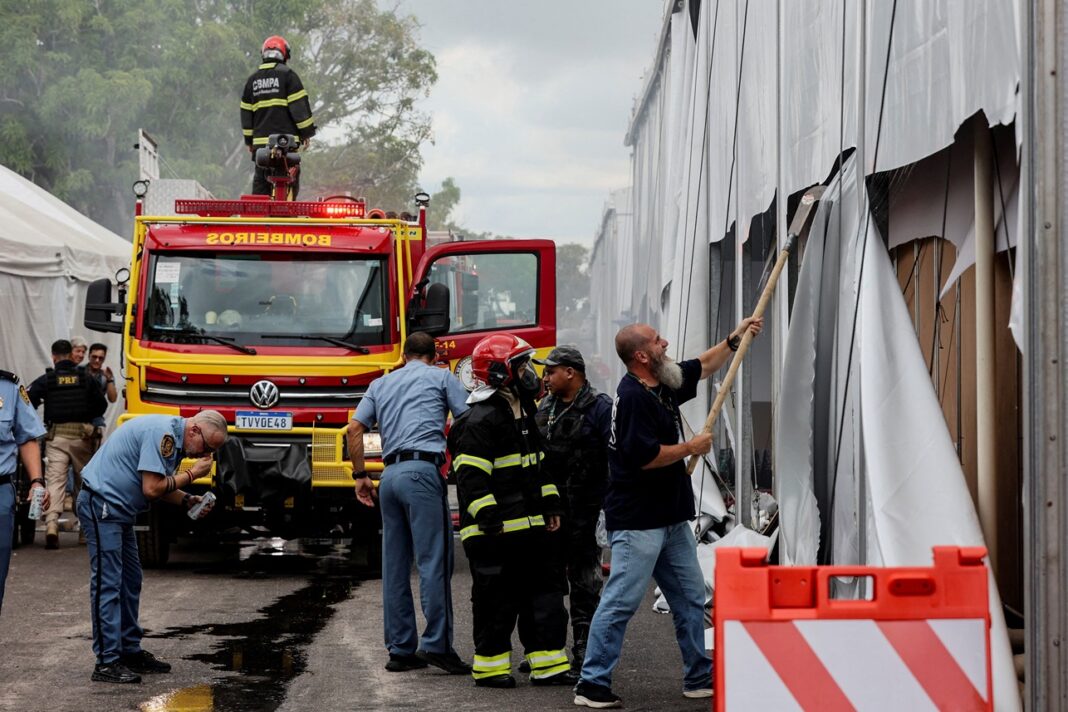The Impact of the Fire at COP30: A Global Perspective
The fire that erupted in one of the COP30 pavilions in Belém sent shockwaves around the world, and its immediate international repercussions were undeniable. This incident not only interrupted crucial negotiations but also became a focal point for media coverage across the globe, showcasing the challenges and vulnerabilities faced during such high-stakes events.
Media Coverage: A Global Lens
Foreign media outlets quickly descended on the story, providing real-time updates and vivid imagery that depicted the chaos unfolding at the convention center. The Associated Press highlighted the urgency of the situation by noting that the fire disrupted negotiations during the “critical final days” of the conference. The evacuation of the entire complex prompted a flurry of activity from reporters, who scrambled for information as security inspections were initiated.
The BBC further amplified the urgency of the situation. Armed with their own photos and videos, they reported witnessing “flames and smoke” within the pavilion. The chaotic scene outside was described as delegates sought shelter from the intense heat, some even taking refuge under a nearby gas station. Their coverage suggested that an electrical fault might have triggered the fire, based on eyewitness testimony, which added another layer of concern regarding the safety of the infrastructure in use.
A Deep-Dive into the Incident
The New York Times provided a gripping account of the panic that spread through the convention center when a “big hole” was observed in the canvas roof. Their reporting didn’t merely focus on the flames but also contextualized the incident within existing criticisms regarding the structure itself, shedding light on prior issues such as leaks and inadequate air conditioning. This historical backdrop illuminated the frailty of the facilities housing such pivotal global discussions.
Meanwhile, Reuters offered a quick update on the fire, noting that it had been brought under control but leaving the question of whether negotiations would resume that same day hanging ominously. They captured the dramatic urgency of the moment with details of delegates running for safety as alarms blared—a reminder of the immediate human impact in the midst of bureaucratic procedures.
First-Hand Experiences and Response
The disarray did not go unnoticed; AFP captured the panic by documenting delegates shouting “fire!” as they attempted to quell the flames with fire extinguishers. Their reporting painted a vivid picture of smoke curling through the hallways, filling the air with tension and urgency. This accounted not just for the physical threat but also for the psychological impact on those present, many of whom were in the midst of discussions that could shape global climate policy.
Politico reinforced this narrative of urgency, armed with photographs that showcased the despair of the moment. Statements from authorities, including Italy’s climate envoy, described how rapidly the fire spread through a corridor in the pavilion—highlighting concerns not only about the immediate safety of attendees but also the adequacy of the temporary structures designed to house such an important event.
Real-Time Updates and International Response
In what can be considered a lightning-fast response in the age of digital media, The Guardian provided live coverage that featured videos capturing the rising smoke and the audible alarms interrupting vital debates. This immediate reporting not only informed audiences but also created a shared experience among thousands who were following the convention across the globe.
In a more succinct manner, the Chinese news agency Xinhua characterized the fire situation as “urgent,” succinctly summarizing the evacuations ordered by firefighters. Their coverage illustrated how international media were not just spectators but also engaged participants in the unfolding narrative.
The Climate of CHAOS
Reinforcing the immediacy of the incident, Bloomberg, Washington Post, and The Telegraph all weighed in with their perspectives. They painted a picture of chaos during what was already a delicate moment in negotiations, with the Telegraph specifically detailing moments of delegates fleeing as flames encroached upon nearby structures, including those associated with the Chinese delegation. This imagery drove home the real risks involved in managing such a pivotal and high-visibility event.
The incident at COP30 serves as a stark reminder of the complexities involved in international climate negotiations. Not only were the dialogues and agreements at stake, but also the physical safety of those participating in what should be a collaborative effort to address one of the most pressing issues of our time. The breadth of international media coverage illustrated how interconnected our responses to climate change are and highlighted the global community’s vigilance in addressing not just climate but the infrastructures that support such endeavors.



